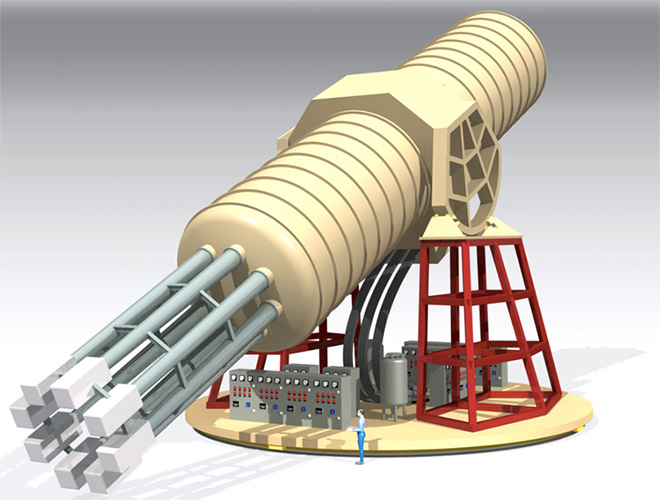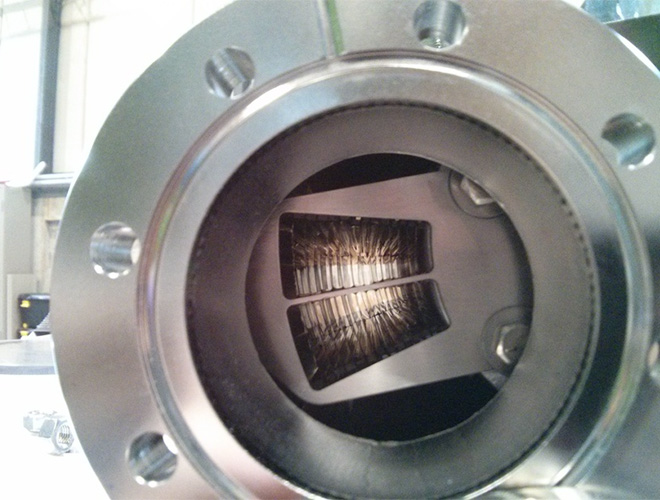Particle astrophysics
Lawrence Livermore researchers are on a mission to find particles contributing to dark matter through the next generation of solar axion searches.
Elusive particles to explain dark matter
More than 80 years after the postulation of dark matter, its nature remains one of the outstanding fundamental questions in cosmology and particle astrophysics. Over the decades, researchers have debated several ideas to explain the nature of dark matter, such as axions, massive neutrinos, or weakly interacting massive particles (WIMPs).
Axions are a leading dark matter candidate, but experiments have yet to confirm or refute the existence of these elusive particles. Dedicated dark matter experiments are methodically eliminating possible phase spaces for WIMPs, reducing the likelihood that they exist. Therefore, axions and axion-like particles provide a viable alternative. Axions are particularly appealing because they were initially introduced to solve a long-standing problem in quantum chromodynamics and the Standard Model of particle physics, so they do not present an ad-hoc solution to dark matter alone.
A search for axions in the Sun
Helioscopes—instruments that track the Sun as it moves across the sky—are used to conduct one of three major types of axion experiments. Lawrence Livermore has long played a major role in these experiments, including:
- Using the helioscope technique employed by the CERN Axion Solar Telescope (CAST) to detect solar axions with masses up to about 1 eV.
- Playing a major role in the Axion Dark Matter Experiment (ADMX) to study halo axions using microwave cavities.
Now, our team holds leadership positions in the next generation of solar axion searches, such as the International Axion Observatory (IAXO) experiment. This experiment will look for axions and axion-like particles produced in the Sun with unprecedented sensitivity. Beyond standard axions, the experiment will also be able to search for a large variety of axion-like particles and other novel excitations at the low-energy frontier of elementary particle physics. Our team has roles in all stages of the project, from conception to data analysis.
Specifically, our team is leading the development of the reflective x-ray telescope. X-ray telescopes are a key element in increasing helioscope sensitivities because they enable the use of strong laboratory magnets with large cross-sectional areas together with small ultra-low background detectors. Focusing x-rays from axion-to-photon conversion via strong magnetic fields is crucial to measuring the signal and background simultaneously and boosting signal-to-noise ratios for these rare-event searches.
Our expertise in axion research and x-ray optics development allows our team to design and build telescopes optimally matched to the expected axion spectrum and detector characteristics. As key drivers of the quality of the science data, the telescopes will be characterized, and then implemented in the IAXO experiment.
Building on previous work
The Laboratory has been called upon throughout the last two-plus decades to develop x-ray optics for a variety of space and ground-based applications, and our work leverages this experience. We built a prototype mirror for IAXO using the same technology and tooling as the x-ray telescope flown on NASA’s Nuclear Spectroscopic Telescope Array, and the prototype has already delivered benchmark results in solar axion research.
People
| Name | Title | Discipline |
|---|---|---|
| Team | ||
Collaborators
X-ray optics
Columbia University
Istituto Nazionale di Astrofisica
DTU Space
Universidad de Zaragoza
Other IAXO collaborators
Barry University
Institute of research into the fundamental laws of the Universe, CEA Saclay
University of Cape Town
Institut de Ciències del Cosmos of the Universitat de Barcelona
Petersburg Nuclear Physics Institute
Heidelberg University
Institute for Nuclear Research of the Russian Academy of Sciences
Rudjer Bošković Institute
Physikalisches Institut der Universitaet Bonn
Instituto de Microelectronica de Barcelona/Centro Nacional de Microelectronica (CSIC)
Johannes Gutenberg University of Mainz
Istituto Nazionale di Astrofisica
Deutsches Elektronen-Synchrotron DESY
CERN
University of Siegen
Select publications
Conceptual Design of BabyIAXO, the intermediate stage towards the International Axion Observatory | Journal of High Energy Physics, 2021
A. Alben et al. (IAXO Collaboration)
Physics Potential of the International Axion Observatory (IAXO) | Journal of Cosmology and Astroparticle Physics, 2019
E. Armengaud et al.
New CAST limit on the axion–photon interaction | Nature Physics, 2017
CAST Collaboration
A Micromegas-based low-background x-ray detector coupled to a slumped-glass telescope for axion research | Journal of Cosmology and Astroparticle Physics, 2015
F. Aznar, J. Castel, F.E. Christensen, T. Dafni, T.A. Decker, E. Ferrer-Ribas, J.A. Garcia, I. Giomataris, J.G. Garza, C.J. Hailey, R.M. Hill, F.J. Iguaz, I.G. Irastorza, A.C. Jakobsen, G. Luzon, H. Mirallas, T. Papaevangelou, M.J. Pivovaroff, J. Ruz, T. Vafeiadis, and J.K. Vogel
New Solar Axion Search in CAST with 4He filling | Phys. Rev. D, 2015
M. Arik et al. (CAST Collaboration)
CAST solar axion search with 3He buffer gas: Closing the hot matter gap | Phys. Rev. Lett., 2014
M. Arik et al. (CAST Collaboration)
Conceptual Design of the International Axion Observatory (IAXO) | Journal of Instrumentation, 2014
E. Armengaud et al. (IAXO collaboration)
CAST constraints on the axion-electron coupling | Journal of Cosmology and Astroparticle Physics, 2013
K. Barth et al.
The Nuclear Spectroscopic Telescope Array (NuSTAR) Mission | The Astrophysical Journal, 2013
F.A. Harrison et al. (NuSTAR Collaboration)






